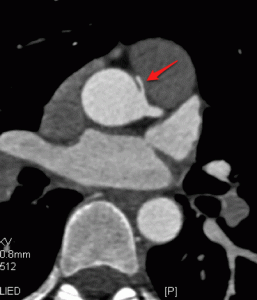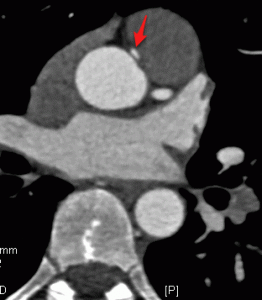The goal of this study was to evaluate whether individuals with a positive family history for premature coronary artery disease (CAD) and coronary calcium scoring (CCS) above the 80th percentile might benefit from preventive treatment.
Background
First-degree relatives of patients with premature CAD have an increased risk for cardiovascular disease (CVD), whereas events are poorly predicted in these individuals. Surrogate markers, such as CCS, might refine risk scoring. Nevertheless, the outcome of the St. Francis Heart trial, which investigated the effect of atorvastatin 20 mg/day in asymptomatic individuals with CCS above the 80th percentile, did not reach statistical significance.
Methods
We performed a post hoc analysis on the database of the St. Francis trial to assess efficacy of treatment with atorvastatin 20 mg/day in those with CCS above the 80th percentile and presence (n = 543) or absence (n = 462) of a positive family history for premature CAD. All participants received aspirin 81 mg/day. Primary outcome included coronary death, myocardial infarction, coronary revascularization, stroke, and arterial surgery.
Results
A total of 1,005 individuals, with a mean age of 59.0 ± 5.9 years and a median absolute CCS of 370 Agatston units (interquartile range: 183 to 662) participated in the trial. After a follow-up of 4.3 (interquartile range: 3.5 to 4.5) years, 7.2% of the treated individuals with a positive family history had a cardiovascular event versus 12.5% of the placebo group (hazard ratio [HR]: 0.55; 95% confidence intervals [CI]: 0.31 to 0.97; p = 0.040). This is comparable with a number needed to treat of 18.9. In individuals without a family history, events were minimally reduced: 6.6% in the treated versus 6.8% in the placebo group (HR: 1.04; 95% CI: 0.51 to 2.13; p = 0.912).
Conclusions
The combination of a positive family history and CCS above the 80th percentile identifies a subgroup within the primary prevention population that receives greater benefit from statin treatment than the population at large. These results have important implications for future guidelines concerning individuals with a positive family history for premature CAD.
Via Journal of the American College of Cardiology: Cardiovascular Imaging
Thoughts? Blunt tool?






